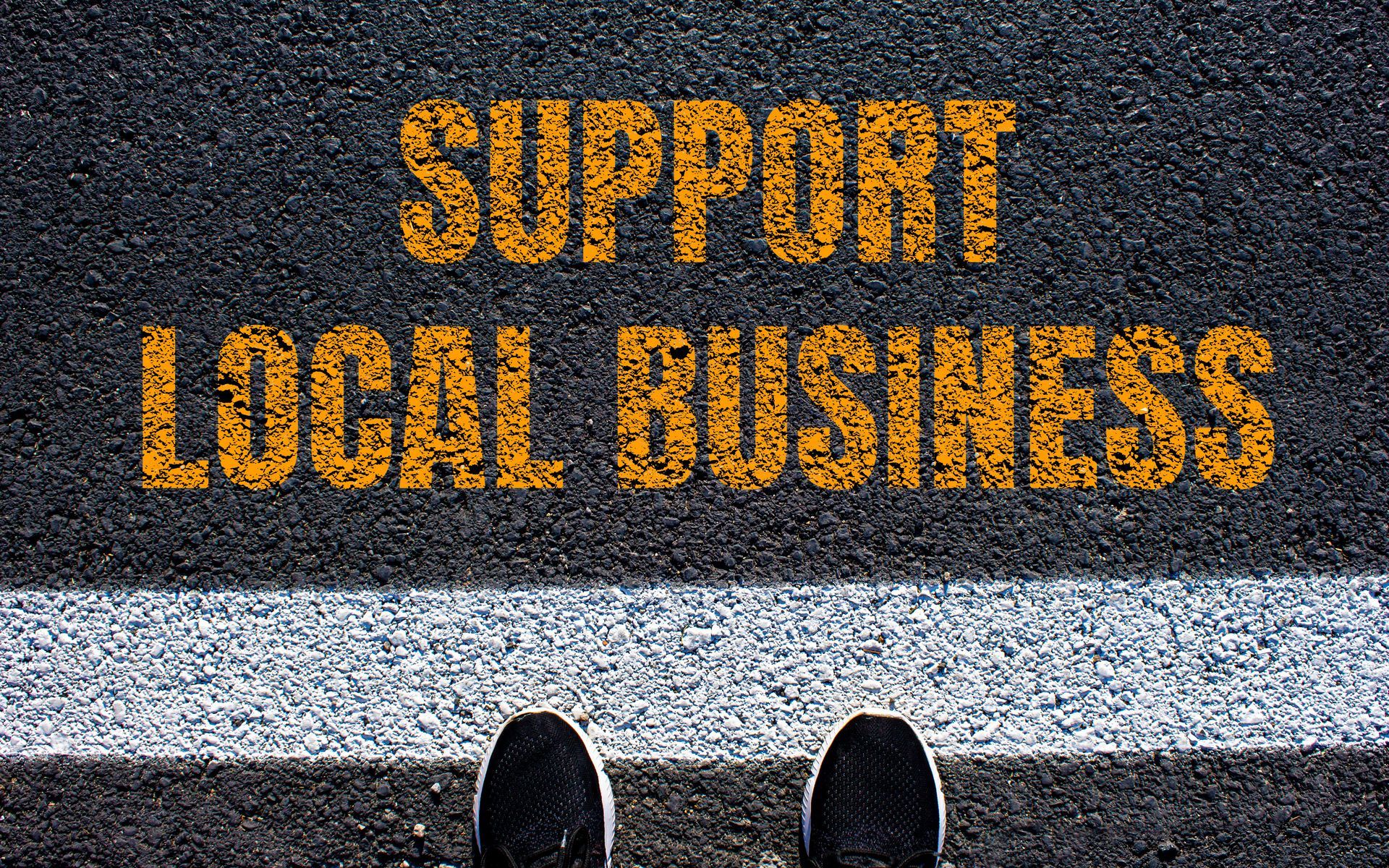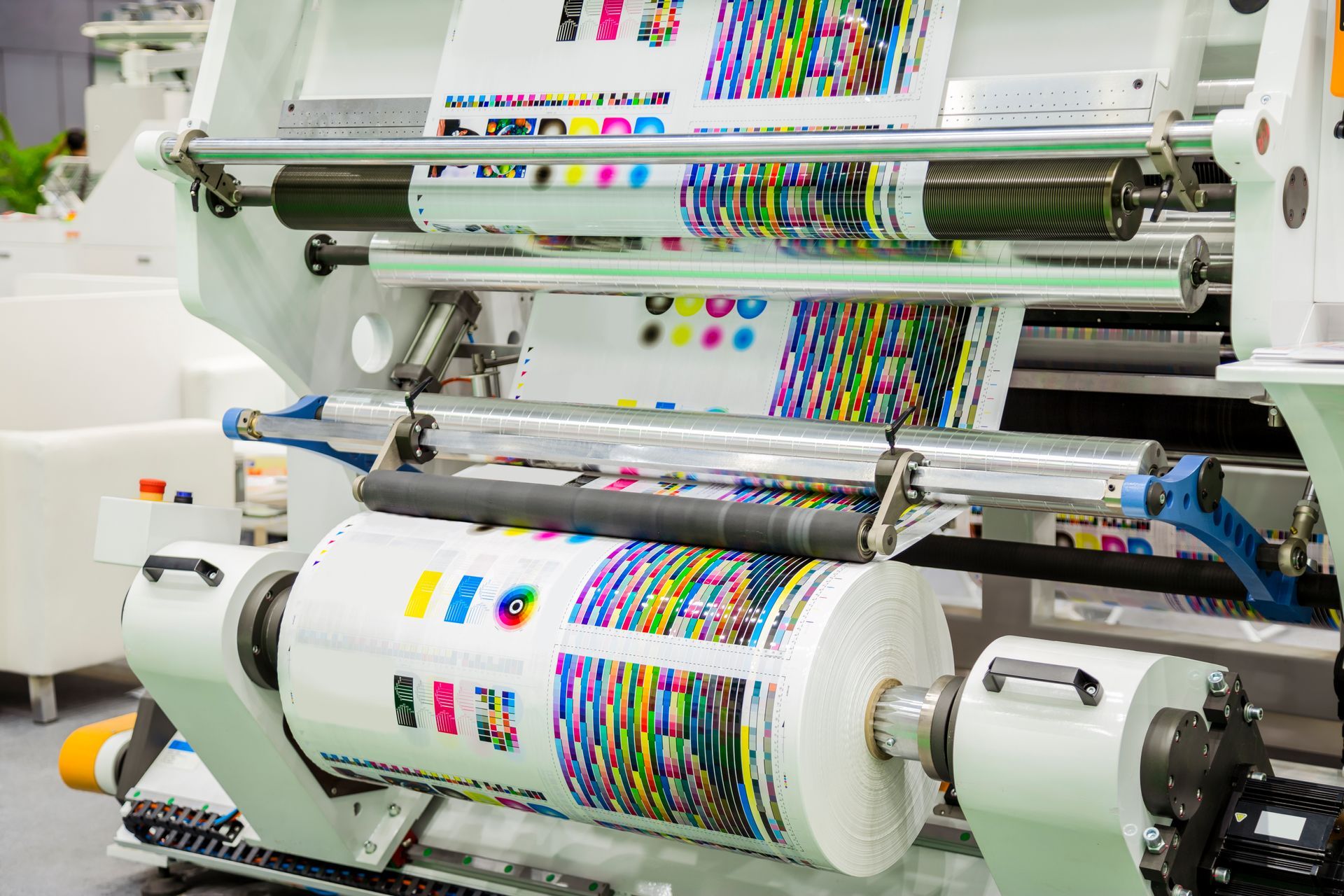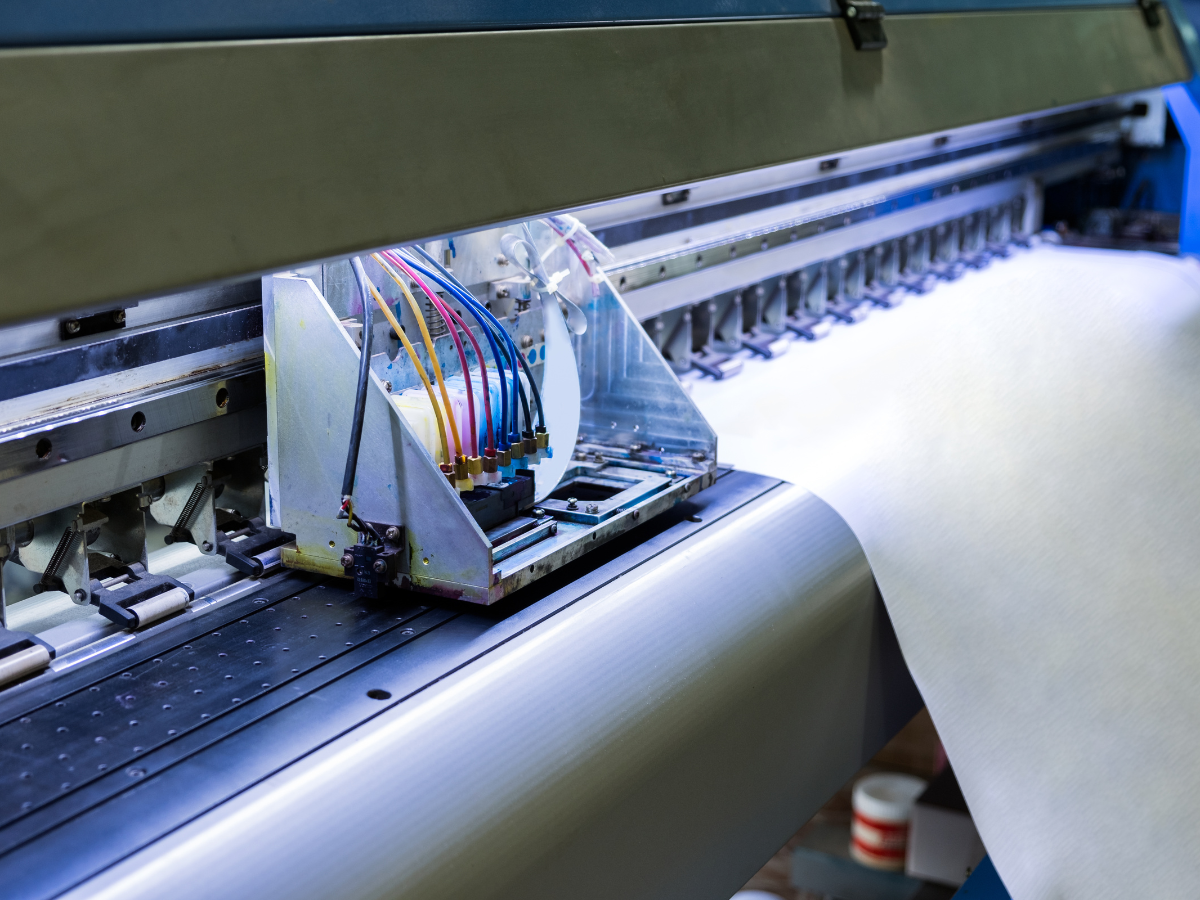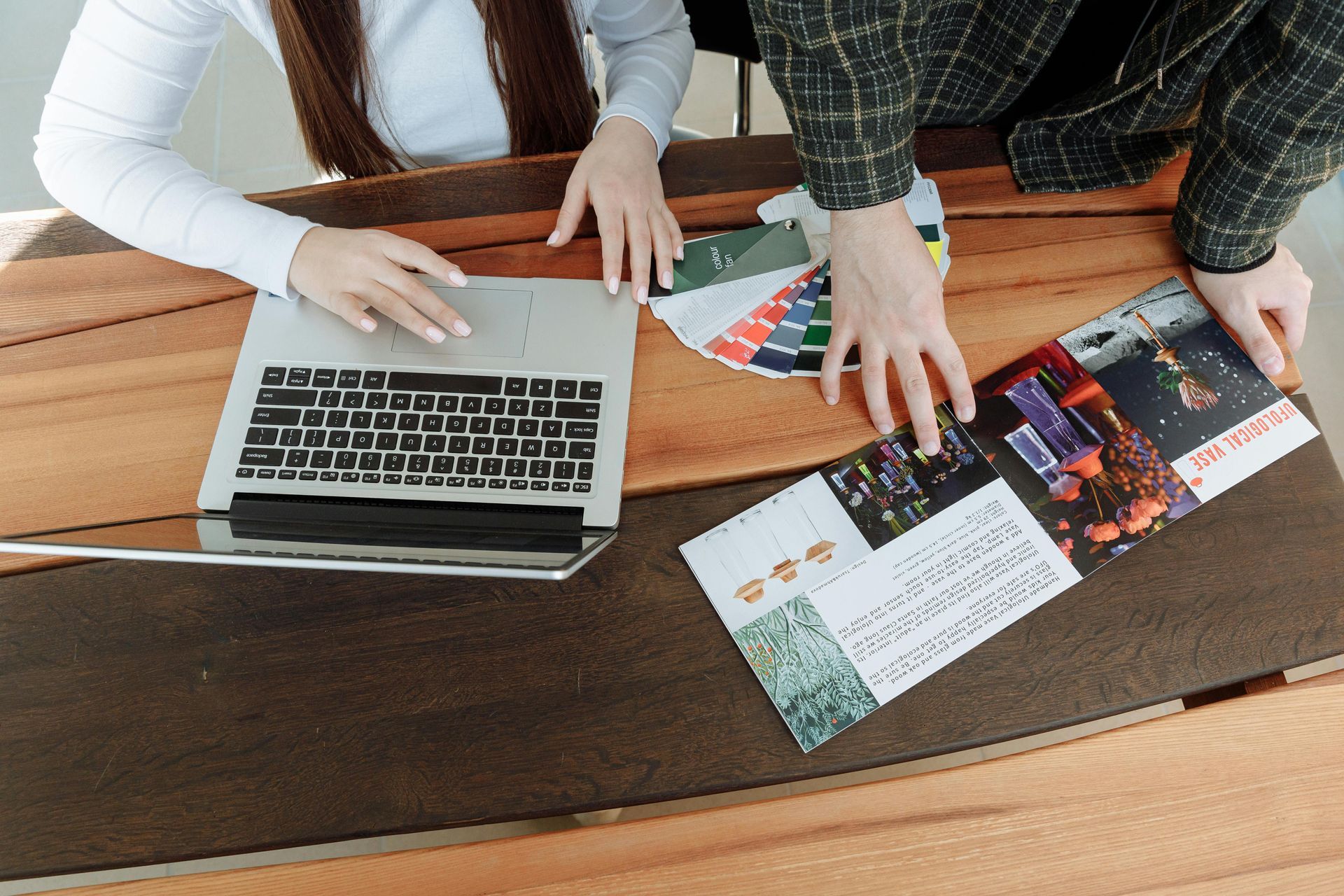Common Printing Terms Explained
The printing industry has its own set of terminology that can be confusing to those who are new to the world of printing. Whether you're designing your business cards, creating brochures, or ordering promotional materials, understanding these terms can help you make more informed decisions about your printing needs. In this blog, we’ll explain some of the most common printing terms, so you can feel confident when navigating your next printing project.
1. Bleed
In printing, a "bleed" refers to the area outside the trim line that is printed, ensuring that the ink extends all the way to the edge of the paper. This is necessary because printers can’t always align the paper perfectly, and the bleed ensures that there are no white edges left around the design. When submitting artwork for print, be sure to include a bleed area, typically about 1/8 inch beyond the trim area, to avoid any unwanted borders in the final product.
2. DPI (Dots Per Inch)
DPI refers to the resolution of an image or print quality, and it measures how many individual dots of ink are placed in a one-inch line. The higher the DPI, the better the quality of the print. For high-quality printing, especially for detailed designs like photographs, 300 DPI is the standard. Low DPI can lead to pixelated or blurry images, so it’s important to ensure that your images are high-resolution when preparing for printing.
3. CMYK vs. RGB
When preparing digital designs for print, it's essential to understand the difference between CMYK and RGB color models:
- CMYK (Cyan, Magenta, Yellow, Key/Black): This is the color model used in the printing process. These four colors are mixed in varying percentages to create the full spectrum of printable colors. If you're designing artwork for printing, it’s crucial to use the CMYK color model to ensure the colors print accurately.
- RGB (Red, Green, Blue): This is the color model used for digital screens. It uses light to create colors and is typically used for web design and online media. Converting RGB colors to CMYK can sometimes cause discrepancies in printed color, so always work in CMYK when preparing files for print.
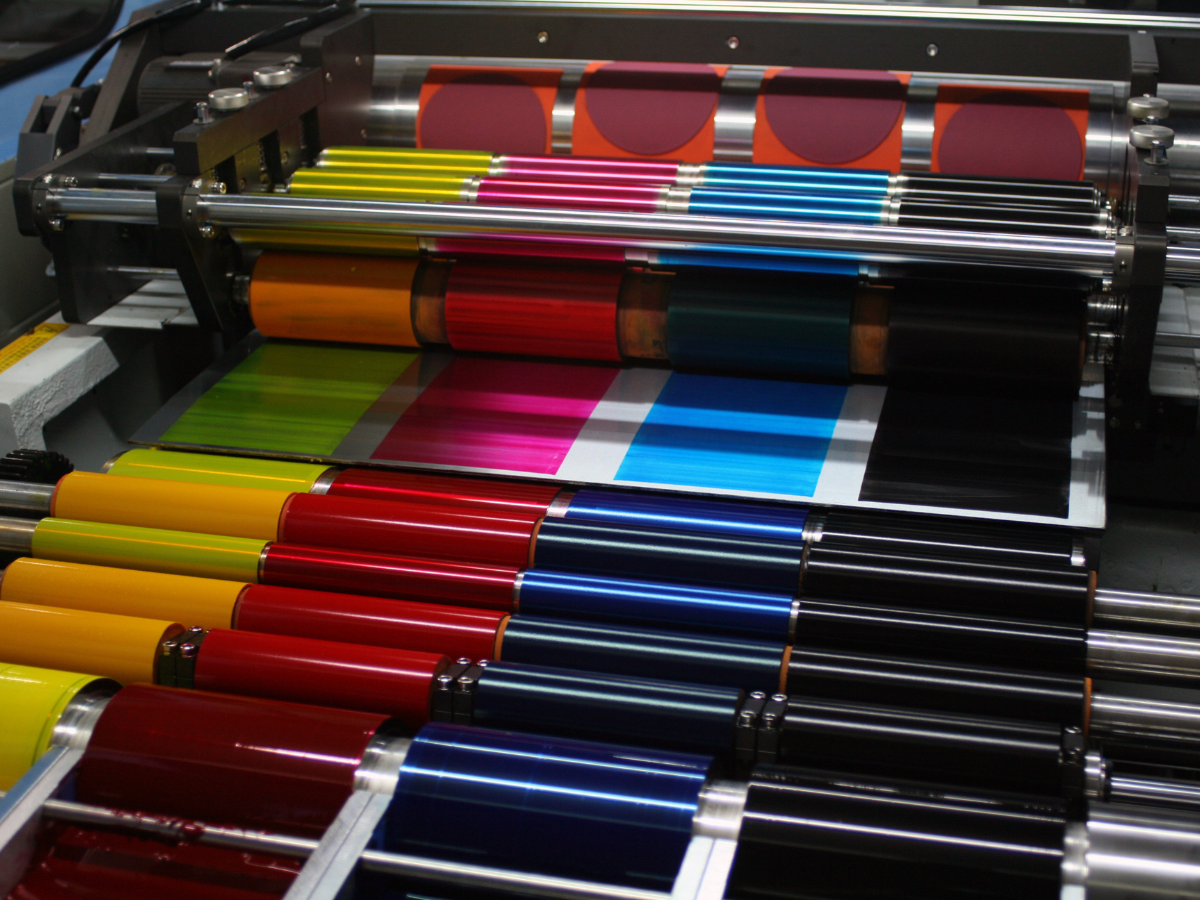
4. Pantone Matching System (PMS)
The Pantone Matching System (PMS) is a standardized color matching system used in printing to ensure consistency across different printers and materials. It allows printers and designers to choose exact colors, ensuring that the printed material matches the intended color every time. PMS colors are often used for logos and branding to maintain color consistency across all printed materials, from business cards to large banners.
5. Resolution
Resolution refers to the clarity and sharpness of an image. In printing, the resolution of your artwork is critical to the final product’s quality. Images should have a resolution of at least 300 DPI for high-quality print production. Low-resolution images (typically under 150 DPI) will appear pixelated or blurry in print. Always check your image resolution before sending it to the printer to ensure your design looks sharp and professional.
6. Paper Stock
"Paper stock" refers to the type, weight, and texture of the paper that will be used in printing. There are various types of paper stock, including:
- Coated Paper: Has a smooth finish and is ideal for printing high-quality images and vibrant colors.
- Uncoated Paper: Offers a more natural texture and is typically used for letterheads, stationery, and other corporate materials.
- Cardstock: Heavier paper often used for business cards, brochures, and postcards.
The type of paper stock you choose can significantly impact the look and feel of your printed materials, so it’s important to choose the right one for your project.
7. Binding
Binding refers to the method used to assemble printed pages into a finished product, such as a book, magazine, or catalog. Common binding methods include:
- Perfect Binding: Pages are glued together along the spine and are typically used for thicker books, magazines, and catalogs.
- Saddle Stitching: Pages are folded in half and stapled together, commonly used for booklets and smaller brochures.
- Spiral Binding: A plastic or metal coil is used to bind pages together, allowing the booklet to lie flat when open.
The type of binding you choose will depend on the number of pages in your project and the desired presentation.
8. Trim Line
The trim line is the final size of your printed piece after it has been cut to the desired dimensions. Anything that falls outside of this line (including the bleed) will be trimmed off during the printing process. It’s important to make sure your design extends all the way to the bleed line, as cutting errors can leave unprinted borders.
9. UV Coating
UV coating is a glossy finish applied to printed materials to protect the ink and give it a shiny, attractive appearance. It’s typically used on business cards, brochures, and other marketing materials. UV coating provides extra durability, making printed pieces resistant to fading, smudging, and scratches. It also gives your printed piece a professional, high-end feel.
10. Die-Cutting
Die-cutting is a process that allows you to cut custom shapes out of your printed materials, giving them a unique and professional look. This is commonly used for business cards, brochures, packaging, and promotional items. Die-cutting can add a creative touch to your materials, making them stand out and draw attention.
Conclusion
Understanding printing terms is essential for anyone looking to create professional-quality printed materials. Whether you're ordering brochures, business cards, or banners, being familiar with common printing terms can help ensure that your designs turn out just as you envisioned.
For expert printing services and high-quality results, contact Press Enterprise Commercial Printing today. Our experienced team is ready to handle all of your printing needs, from concept to final product.




